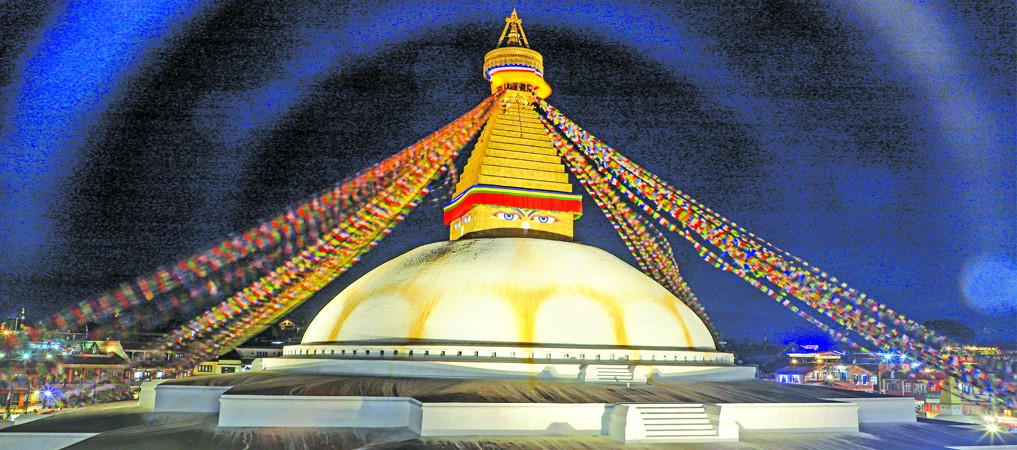Hotels Enough To Host 2.5m Tourists

Laxman Kafle
The country is celebrating Visit Nepal Year 2020 with the slogan of 'Lifetime Experiences' setting a target to host 2 million foreign tourists in the next twelve months.
Over the past couple of years, the hotel industry in Nepal has grown by leaps and bounds and it is now in a position to host more than 2 million tourists annually.
"Hotels have not been a bottleneck to the country's tourism growth. We are now ready to cater services to about 2.5 million tourists," said Binayak Shah, 1st vice-president of Hotel Association Nepal (HAN).
Shah said the country needs to host about 5,480 tourists a day to meet the annual target of 2 million. "We are quite confident that we will be able to provide accommodation to tourists without any obstacle."
Kathmandu played host to around 7,000 foreign delegates during the South Asian Games 2019.
The country has continued to witness a significant growth in the number of hotels belonging to different categories, including five-star ones, over the years. There are as many as 15 five-star hotels in operation across the country. Most of them are in Kathmandu.
Statistics show that more than 10,000 tourist standard hotels are now catering services across the country. Of them, Thamel, a major tourist hub of Kathmandu, alone possesses about 500 tourist standard hotels. Several new hotels are in the pipeline.
The number of restaurants serving different cuisines and home-stay facilities are also on the rise.
The country has a seven-decade experience in operation of hotels. In 1951, Hotel Nepal was established at Jawalakhel by a Rana family.
"We are more professionally organised in the tourism sector. The hotel industry is the key to creating jobs, making foreign exchanges and thus contributing to the Gross Domestic Product (GDP)," Shah said.
According to him, more than Rs. 1,000 billion has already been invested in the hotel industry in Nepal.
However, the country is yet to diversify tourism. Only limited destinations like Kathmandu, Pokhara and Chitwan and few mountain areas host tourists.
"Taking tourism to all the seven states in the country is a great challenge before us," he said.
The tourism industry can thrive only when there is convenient air and road connectivity.
"Attracting 2 million tourists is not a big deal for us. But we must have better connectivity-related infrastructure," he said.
Talking about the growing congestions at the Tribhuvan International Airport (TIA), he called for alternative airport in order to welcome more tourists.
Located between China and India, Nepal may not have to face any seasonality constraint for tourism once there is improved connectivity.
In the past, October-March used to be the tourist season when Europeans and Americans would visit Nepal. But now the situation has changed for the better with tourists from China and India visiting the country throughout the year.
Expensive air fare to Nepal has been one of the major problems. The air fare component of tourists covers almost 60-70 per cent of their total budget.
They spend only 30 per cent for accommodation and tours. But in foreign countries, this ratio is in reverse.
However, the cost of accommodation is much cheaper in Nepal than in other destinations.
The country has home-stay services in various places that may reduce the occupancy of hotels. These services are also contributing to the country's tourism industry by offering new experiences to tourists. Those willing to stay longer in the country prefer home-stay facilities because of cheaper rates.
Shah urged the government to introduce more tourism-friendly policies and encourage the private sector to make more investment in tourism business.
"We have to focus on proper management of existing facilities and infrastructure to provide quality services to the tourists. It is necessary for us to keep airports, roads as well as tourist spots, including heritage sites, neat and clean," he suggested.
National carriers of any country can play an important role in boosting tourism. "Nepal Airlines Corporation (NAC) also needs to expand its services. The national carrier should operate additional flights to New Delhi of India," he said.
The government and the private sector need to introduce special offers to tourists during the national tourism campaign. Likewise, Nepali embassies based in different countries should issue visa to prospective tourists immediately.
HAN members will provide 30 per cent discount on room tariff and 15 per cent on restaurant and bar services, Sanjan Shakya, general secretary of the association, said.
HAN has around 2,300 member hotels, resorts and guest houses across the country. Out of them, about 1,200 are inside the Kathmandu Valley.
The airlines are also required to announce special offers targeting the VNY. If the airlines reduce airfare, more tourists are likely to stay longer within the country.
(Kafle is a TRN journalist)
Recent News

Do not make expressions casting dout on election: EC
14 Apr, 2022
CM Bhatta says may New Year 2079 BS inspire positive thinking
14 Apr, 2022
Three new cases, 44 recoveries in 24 hours
14 Apr, 2022
689 climbers of 84 teams so far acquire permits for climbing various peaks this spring season
14 Apr, 2022
How the rising cost of living crisis is impacting Nepal
14 Apr, 2022
US military confirms an interstellar meteor collided with Earth
14 Apr, 2022
Valneva Covid vaccine approved for use in UK
14 Apr, 2022
Chair Prachanda highlights need of unity among Maoist, Communist forces
14 Apr, 2022
Ranbir Kapoor and Alia Bhatt: Bollywood toasts star couple on wedding
14 Apr, 2022
President Bhandari confers decorations (Photo Feature)
14 Apr, 2022











